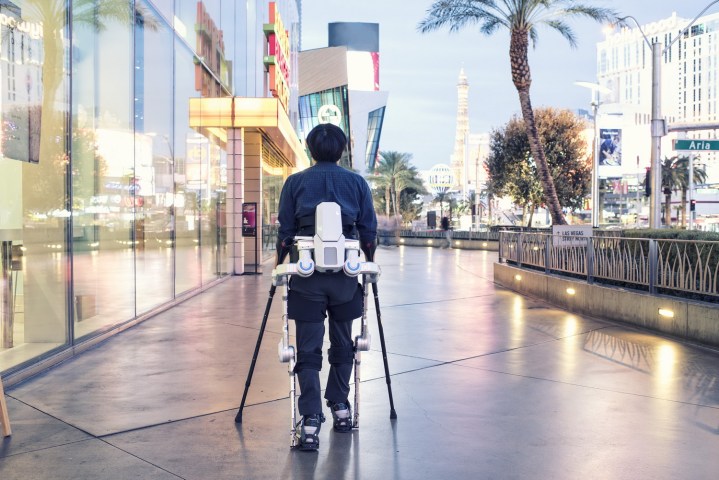
As much as we love our shiny new iPhone X, when it comes to technology that really changes people’s lives, very little compares to tech that’s designed to help disabled people lead fuller, more active, more independent, or simply more dignified lives. Thanks to advances in robotics, materials engineering, artificial intelligence, and a broad range of other things, assistive tech has progressed in leaps and bounds over the past decade. Here are seven astonishing examples of what we’re talking about:
Making glasses smarter
Depending on your specific difficulty, glasses or contact lenses work by either diverging or converging light rays to affect the eye’s focusing abilities. That’s all well and good, but in the age of self-driving cars and smartphones, surely engineers can do a little bit better than that, right?
At the U.K.’s University of Oxford, a computer vision scientist and a neuroscientist have teamed up to build augmented reality glasses that promise to further enhance specific parts of a person’s vision. This could mean anything from increasing image contrast to highlighting specific features of an image, all using the power of AR.
The smart glasses aren’t available yet, but the project has already attracted the attention of Google — which chipped in with a handy $658,000 grant to help with research.
Give us a sign!
Sign language is a great tool for helping deaf people communicate, but while American Sign Language (ASL) is used by an estimated 100,000 to 500,000 Americans, that still leaves an enormous number of people who don’t understand it. Fortunately, that’s something technology can help with.
Called KinTrans, a Dallas-based startup has developed a device capable of translating sign language into voice and text, and voice or text back into sign language. To do this, it uses a 3D camera to track the movement of a signer’s hands and body when they sign out words. The results are supposedly 98 percent accurate. A beta version has already been rolled out.
Restoring hearing by reading your brain waves
Imagine a hearing aid that doesn’t simplify the noises around you, but actually tunes into your brain waves to work out what you want to listen to. You won’t need to imagine such a thing for much longer, however, because that’s exactly what researchers at Columbia University School of Engineering and Applied Science are working on.
Their “cognitive hearing aid” reads brain activity to determine which voice a hearing aid user is most interested in listening to, and then focusing in on it. At present, the researchers are working to improve the technology by making it less obtrusive. This is clearly what the future of hearing aids look like!
A helping hand
As robotics technology has progressed in leaps and bounds as of late, so too have tools like bionic hands, designed to help amputees.
These tools can work in a variety of ways, including ones powered by nerve endings in the arm, and even prostheses which use their own in-built cameras to make smart autonomous decisions about which actions to take — thereby speeding up reaction times.
Helping Parkinson’s patients avoid falls
Parkinson’s disease is a progressive neurodegenerative brain disorder with a wide range of symptoms — not least the fact that sufferers are more likely to suffer from falls or loss of balance. At the University of Houston, researchers have developed a smartphone-based biofeedback rehabilitation wearable to help counter the effects.
Their special belt is lined with vibrating actuators, which map users’ movements in real time. This information can then be used to guide patients through exercises to improve their postural stability and confidence in carrying out everyday activities. You know, until scientists figure out how to cure Parkinson’s by reprogramming brain cells!
Getting folks walking again
There are few more life-altering technologies than assistive tools which can help people to walk again after they’re been rendered unable to do so under their own power. There are a wide number of incredibly innovative projects going on in this space, from pressure sensor-equipped staircases that will provide an extra bit of assistance when needed, to full-on modular exoskeletons.
Heck, one startup is even building assistive robot exoskeletons that are controlled by Amazon Alexa.
Unlocking locked-in syndrome
When it comes to physical disabilities, few things are more daunting than the idea of being trapped in your own body, with a mind that’s fully active, but without the ability to move, speak, or physically communicate in any way.
Although “locked-in syndrome” has no cure, technology can help patients — by using brain-computer interface technology to allow people to respond to “yes” and “no” questions with nothing more than their thoughts. The technology uses electrodes and some smart machine learning tools to work, and reportedly boasts up to 80 percent accuracy.




